
漢德百科全書 | 汉德百科全书

Das Kaiserreich Brasilien (portugiesisch Império do Brasil) war ein Staat im Osten Südamerikas und bestand von 1822 bis 1889 auf dem Gebiet der heutigen Republiken Brasilien und zunächst auch Uruguay, das bereits 1828 seine Unabhängigkeit von Brasilien erlangte. Die beiden Kaiser Peter I. und Peter II. entstammten dem Haus Braganza. Das Kaiserreich entstand aus dem Vereinigten Königreich von Portugal, Brasilien und den Algarven. Die Monarchie wurde nach dem Putsch vom 15. November 1889 beseitigt und die erste brasilianische Republik gegründet.
Für die Zeit der portugiesischen Könige in Brasilien (1808–1821) ist die Bezeichnung Königreich Brasilien (Reino do Brasil) üblich, die Regierungszeit von Peter I. (1822–1831) wird als Erstes Brasilianisches Kaiserreich (Primeiro Império do Brasil) bezeichnet und diejenige von Peter II. als Zweites Brasilianisches Kaiserreich (Segundo Império do Brasil). Im Gegensatz zu den meisten benachbarten hispanoamerikanischen Republiken besaß Brasilien nach der Unabhängigkeit politische Stabilität, ein dynamisches Wirtschaftswachstum, verfassungsmäßig garantierte Redefreiheit und die Achtung der Bürgerrechte seiner Untertanen, allerdings mit rechtlichen Einschränkungen für Frauen und Sklaven. Das Zweikammerparlament des Reiches wurde für die Zeit, wie auch die Provinz- und Lokalparlamente, unter vergleichsweise demokratischen Methoden gewählt.[1]
巴西帝国(葡萄牙语:Império do Brasil),是1822年至1889年间,领土包含现代南美洲巴西所建立的一个代议民主制、议会制的君主立宪国家,由葡萄牙亲王佩德罗一世及其子佩德罗二世所统治着。在佩德罗二世统治下,巴西帝国和邻国的三场战役皆取得胜利。1889年,佩德罗二世被废黜,帝国由德奥多罗·达·丰塞卡建立的第一共和国取代,巴西帝国宣告正式灭亡。
不同于它大多数接壤的西班牙语美洲的共和国,巴西帝国政局稳定、经济增长动力强劲、依法保护公民言论自由的权利并尊重所统治子民的公民权力。但仍有瑕疵,如宪法制定上女性和奴隶们的权利受到限制,且在后期仅将他们视作财产而非公民。
佩德罗·阿尔瓦雷斯·卡布拉尔于1500年4月22日从海路首次达今天巴西这个区域,并宣告这块领地属于葡萄牙。[1]随后永久居留地于1532年在此区域开始建立,之后三百年来葡萄牙人缓慢向西扩展领地,并逐渐形成了现在巴西的所有边境。[2]19世纪初,整个欧洲经历了拿破仑战争。葡萄牙更在1808年被法军所占领(半岛战争)。因此,葡萄牙的布拉干萨王室逃亡到南美的殖民地巴西,1809年更迁都里约热内卢。[3]
1815年,葡萄牙皇储若昂阁下(之后的若昂六世)以摄政的方式在巴西建立了“葡萄牙-巴西-阿尔加维联合王国”,使得巴西从殖民地变为一个王国。之后的一年,随着他的母亲玛丽亚一世的逝世,他又登上了葡萄牙王国的宝座。1821年4月若昂回到葡萄牙。不久后,拿破仑战争结束,葡萄牙王室返回里斯本,并派若昂六世之长子摄政王佩德罗王子继续统治巴西。[4][5]佩德罗于是开始进行大规模改革,废除王室颁布的盐税,又重整政府机关,更放宽人民的自由。此外,他更派出代表到葡萄牙议会参与政事,这使巴西的经济及文化都有很大的改善。可是,奴隶买卖仍然存在。
1821年9月,葡萄牙议会表决,废除巴西王国的名衔,所有位于里约热内卢的王室机关将被废除,并宣告巴西各省受里斯本管辖。[6][7]因此,葡萄牙政府派遣军队到巴西驻兵,并把巴西的武装力量置于葡军的控制下,以加强对巴西的控制。后来在伯南布哥、巴伊亚等地,葡军和当地的武装分子发生武装冲突。1822年1月,议会要求佩德罗立刻返回里斯本,佩德罗拒绝,并宣告将留在巴西,不久后建立由若泽·博尼法西奥·德·安德拉达(José Bonifacio de Andrada e Silva)为首的新政府,更要求葡萄牙驻军撤出巴西。[8][9]
同年2月,葡萄牙驻巴西的军队开始打击巴西境内的分离活动。佩德罗于是撤销葡军指挥官的职务,并向葡军下达后退的指令。一个月后,葡萄牙增援部队到达里约热内卢外海,但被佩德罗拒绝入港,到达里约热内卢增援的葡军及驻巴西葡军在补给后返回葡萄牙。然而,在伯南布哥省、巴伊亚省却开始出现了流血事件,当地武装分子向驻军发动攻击,双方出现流血冲突。5月,佩德罗宣告自己成为“巴西的保护者”。
8月,葡萄牙议会决议,废除佩德罗的摄政王职务,并组织讨伐军讨伐巴西。1822年9月,到达圣保罗市的佩德罗,得悉本国将要派出讨伐军后,便到附近的伊皮兰加河(Rio Ipiranga)脱下军服上的葡萄牙徽章,拔剑宣誓“不独立,毋宁死!”(Independência ou Morte!)[10],正式宣告巴西独立。1822年10月12日,佩德罗宣告自己成为巴西皇帝佩德罗一世,并在12月1日加冕,建立巴西帝国,由若泽·博尼法西奥·德·安德拉达出任帝国的首相。[11][12]
ブラジル帝国(ブラジルていこく、Império do Brasil)は、1822年から1889年まで南米ブラジルを統治した立憲君主制 議会 国家。1828年までは現在のウルグアイも含まれていた。
1808年ポルトガルのブラガンサ王朝はナポレオン軍の侵攻を逃れて植民地ブラジルに逃れ、1809年リオデジャネイロに遷都した。ポルトガル宮廷のリオ滞在によってブラジルは人口も増え、文明も進歩した。この間、1815年にそれまで公国だったブラジルは植民地からポルトガルと対等な王国に昇格され、ポルトガル・ブラジル及びアルガルヴェ連合王国に再編された。1821年ポルトガル・ブラジル王ジョアン6世はリスボン帰還を果たし、ブラジル国王兼位のまま王太子ドン・ペドロをブラジル摂政として残した。ポルトガルはブラジルの分離独立を恐れて、ブラジルにポルトガル軍を送り込んで統制を強化したが、これがかえってブラジル在地支配層の反感を買い、ポルトガル派とブラジル派の対立が激化した。1822年、ブラジル在地支配層は摂政ドン・ペドロを擁立して連合王国からの独立を宣言し、ペルナンブーコなどに駐屯していたポルトガル軍を破った。
ブラジルが君主を擁立して独立するとしても、何故「王国」ではなく「帝国」なのかであるが、これは広大なブラジル諸地域がイスパノアメリカ諸国のように分裂せず、統一を保つためには皇帝という求心軸が必要だったと解釈されている。
ポルトガル王太子ドン・ペドロはポルトガル王位継承権を保ったまま、ポルトガル本国の意に反してブラジル皇帝となった。1825年当時、ポルトガルに絶大な影響力をもつイギリスがブラジルの独立を承認し、アメリカ合衆国の介入を警戒してポルトガルにもブラジルを承認させた。同年フアン・アントニオ・ラバジェハのシスプラチナ州潜入により、1821年に併合した東方州はブラジルからの独立と、アルゼンチンへの編入を求めて独立戦争を開始し、ラ・プラタ連合もこれを支援した。この内乱はブラジルの宣戦布告によりシスプラティーナ戦争へと発展し、戦争はアルゼンチン有利に進んだが、ラ・プラタ川の両岸をアルゼンチンが保有することを恐れたイギリスの仲介により、1828年にモンテビデオ条約が結ばれ、シスプラチナ州はウルグアイ東方共和国としての独立が認められた。この敗戦は皇帝ドン・ペドロ1世の失脚の原因ともなった。
1826年にポルトガル本国でジョアン6世が死去すると、王位継承者であるドン・ペドロがブラジル皇帝となっていたので王位継承問題が発生した。本国の保守反動派はドン・ペドロの継承権無効を宣言して、ドン・ペドロの弟ドン・ミゲルの擁立を主張した。これに対してドン・ペドロは在ブラジルのままポルトガル王ペドロ4世として即位を宣言、ただちに長女マリア・ダ・グロリアに譲位した。そしてマリア・ダ・グロリアを叔父ドン・ミゲルと結婚させ、ミゲルをポルトガル摂政とする妥協が図られた。一時はこの妥協が成立したが、1828年にドン・ミゲルは約束を破棄して即位を宣言、このためドン・ペドロは1831年ブラジル皇帝位を長男のペドロ2世に譲位し、長女マリア・ダ・グロリアのポルトガル王位を主張してポルトガルに向かった。
ブラジル新皇帝ペドロ2世は長期にわたって在位し、ブラジルによるウルグアイへの干渉から始まった三国同盟戦争を戦い抜き、パラグアイを壊滅させるなど治世を安定させた。ペドロ2世はブラジルの奴隷制を廃止するなど自由主義的な君主であったが、糖尿病に侵されて次第に統治能力を失い、1888年の奴隷制廃止により大打撃を受けた保守支配層が1889年に企んだ軍部のクーデターによって廃位され(ブラジル共和制革命)、ブラジルは共和制となった。
帝国が滅んだ後も、帝国時代を懐かしむ者は、ブラジル国内に保守層を中心に存在している。1993年、ブラジルでは統治形態に関する国民投票が行われ、3分の2が共和制を選択する一方、13.2%は君主制を選択した[1]。
The Empire of Brazil was a 19th-century state that broadly comprised the territories which form modern Brazil and (until 1828) Uruguay. Its government was a representative parliamentary constitutional monarchy under the rule of Emperors Dom Pedro I and his son Dom Pedro II. A colony of the Kingdom of Portugal, Brazil became the seat of the Portuguese colonial Empire in 1808, when the Portuguese Prince regent, later King Dom João VI, fled from Napoleon's invasion of Portugal and established himself and his government in the Brazilian city of Rio de Janeiro. João VI later returned to Portugal, leaving his eldest son and heir, Pedro, to rule the Kingdom of Brazil as regent. On 7 September 1822, Pedro declared the independence of Brazil and, after waging a successful war against his father's kingdom, was acclaimed on 12 October as Pedro I, the first Emperor of Brazil. The new country was huge but sparsely populated and ethnically diverse.
Unlike most of the neighboring Hispanic American republics, Brazil had political stability, vibrant economic growth, constitutionally guaranteed freedom of speech, and respect for civil rights of its subjects, albeit with legal restrictions on women and slaves, the latter regarded as property and not citizens. The empire's bicameral parliament was elected under comparatively democratic methods for the era, as were the provincial and local legislatures. This led to a long ideological conflict between Pedro I and a sizable parliamentary faction over the role of the monarch in the government. He faced other obstacles. The unsuccessful Cisplatine War against the neighboring United Provinces of the Río de la Plata in 1828 led to the secession of the province of Cisplatina (later to become Uruguay). In 1826, despite his role in Brazilian independence, he became the king of Portugal; he immediately abdicated the Portuguese throne in favor of his eldest daughter. Two years later, she was usurped by Pedro I's younger brother Miguel. Unable to deal with both Brazilian and Portuguese affairs, Pedro I abdicated his Brazilian throne on 7 April 1831 and immediately departed for Europe to restore his daughter to the Portuguese throne.
Pedro I's successor in Brazil was his five-year-old son, Pedro II. As the latter was still a minor, a weak regency was created. The power vacuum resulting from the absence of a ruling monarch as the ultimate arbiter in political disputes led to regional civil wars between local factions. Having inherited an empire on the verge of disintegration, Pedro II, once he was declared of age, managed to bring peace and stability to the country, which eventually became an emerging international power. Brazil was victorious in three international conflicts (the Platine War, the Uruguayan War and the Paraguayan War) under Pedro II's rule, and the Empire prevailed in several other international disputes and outbreaks of domestic strife. With prosperity and economic development came an influx of European immigration, including Protestants and Jews, although Brazil remained mostly Catholic. Slavery, which had initially been widespread, was restricted by successive legislation until its final abolition in 1888. Brazilian visual arts, literature and theater developed during this time of progress. Although heavily influenced by European styles that ranged from Neoclassicism to Romanticism, each concept was adapted to create a culture that was uniquely Brazilian.
Even though the last four decades of Pedro II's reign were marked by continuous internal peace and economic prosperity, he had no desire to see the monarchy survive beyond his lifetime and made no effort to maintain support for the institution. The next in line to the throne was his daughter Isabel, but neither Pedro II nor the ruling classes considered a female monarch acceptable. Lacking any viable heir, the Empire's political leaders saw no reason to defend the monarchy. After a 58-year reign, on 15 November 1889 the Emperor was overthrown in a sudden coup d'état led by a clique of military leaders whose goal was the formation of a republic headed by a dictator, forming the First Brazilian Republic.
L’empire du Brésil (en portugais : Império do Brasil) ou, abusivement, l’Empire brésiliennote 1 est une entité politique qui occupe, au xixe siècle, sensiblement les territoires qui constituent le Brésil actuel. Il s'agit alors d'une monarchie constitutionnelle parlementaire et représentative dont les souverains successifs sont les empereurs Pierre Ier et Pierre II, tous deux membres de la maison de Bragance, une branche de la dynastie capétienne vieille de mille ans. D'abord colonie du royaume de Portugal, le Brésil devient le siège de l'empire colonial portugais en 1808, lorsque le futur roi Jean VI, alors régent de Portugal, s'enfuit de son pays après son invasion par les troupes de Napoléon Ier. La famille royale s'installe alors avec son gouvernement dans la ville brésilienne de Rio de Janeiro. Quelques années après la libération du Portugal, Jean VI retourne en Europe en 1821, mais laisse son fils aîné et héritier, l'infant Pierre, à la tête du Brésil en qualité de régent.
Le 7 septembre 1822, le prince Pierre déclare l'indépendance du Brésil et, après une guerre victorieuse contre le royaume de son père, il est proclamé premier empereur du Brésil le 12 octobre sous le nom de Pierre Ier. Le nouveau pays est immense, mais peu peuplé et ethniquement divers. Contrairement aux républiques hispaniques voisines, le Brésil jouit d'une certaine stabilité politique, d'une relative liberté d'expression et du respect des droits civils. Il connaît en outre une croissance économique dynamique. Son Parlement bicaméral, de même que les législatures provinciales et locales, sont élus selon des méthodes démocratiques pour l'époque. Malgré tout, un long conflit idéologique oppose l'empereur et une fraction importante du Parlement sur le rôle du monarque dans le gouvernement. Pierre Ier connaît également d'autres problèmes : l'échec de la guerre de Cisplatine contre les Provinces-Unies du Río de la Plata conduit à la sécession d'une province du Brésil (qui devient plus tard l'Uruguay) en 1828. En dépit de son rôle dans l'indépendance du Brésil, Pierre Ier devient roi de Portugal en 1826 mais abdique immédiatement en faveur de sa fille aînée, Marie II. Deux ans plus tard, le trône portugais est usurpé par le frère cadet de l'empereur, Michel Ier. Ne pouvant gérer simultanément les affaires brésiliennes et portugaises, Pierre Ier abdique le 7 avril 1831 et part aussitôt pour l'Europe pour restaurer sa fille à Lisbonne.
Son successeur au Brésil est son fils Pierre II, âgé de seulement cinq ans. Comme ce dernier est encore mineur, une régence est mise en place mais son autorité montre bien vite ses limites. Le vide du pouvoir résultant de l'absence d'un monarque au pouvoir comme ultime arbitre dans les conflits politiques régionaux conduit à des guerres civiles entre factions locales. Ayant hérité d'un empire au bord de la désintégration, Pierre II, une fois déclaré majeur, réussit à apporter la paix et la stabilité dans le pays qui finit par devenir une puissance émergente sur la scène latino-américaine. Le Brésil remporte alors trois conflits internationaux (la guerre de la Plata, la guerre uruguayenne et la guerre du Paraguay) sous sa direction et joue un rôle prédominant dans plusieurs autres conflits internationaux et querelles internes. Avec la prospérité et le développement économique, le pays connaît un afflux d'immigrants européens, notamment italiens et portugais mais aussi allemands ou juifs. L'esclavage, qui était initialement généralisé, est restreint par des lois successives jusqu'à son abolition définitive en 1888. Les arts visuels, la littérature et le théâtre se développent au cours de cette période de progrès. Bien que fortement influencé par les styles européens qui vont du néoclassicisme au romantisme, chaque apport est adapté aux conceptions locales pour créer une culture propre au Brésil.
Même si les quatre dernières décennies du règne de Pierre II sont marquées par une paix intérieure continue et la prospérité économique, l'empereur ne croit guère en la survie du régime monarchique. En vieillissant, il ne fait aucun effort pour garder le soutien des institutions. Comme Pierre II n'a pas d'héritier mâle (son successeur désigné est sa fille Isabelle mais ni lui ni les classes dirigeantes n'acceptent réellement l'idée d'un souverain féminin au Brésil), de plus en plus d'hommes politiques estiment qu'il n'y a aucune raison de conserver la monarchie. L'empereur est renversé, le 15 novembre 1889, après 58 ans de règne, par un coup d'État qui n'a pour soutien qu'un groupe de militaires désireux d'instaurer une République dictatoriale.
L'Impero del Brasile fu l'entità politica che comprendeva gran parte del territorio del Brasile odierno, governata dagli imperatori Pietro I e suo figlio Pietro II. Fondato nel 1822 con l'indipendenza dalla corona portoghese, ebbe fine nel 1889, con la proclamazione della repubblica.
A causa della occupazione di Napoleone del Portogallo, i Braganza andarono in esilio in Brasile, la colonia più importante dell'impero portoghese. Il periodo che seguì vide lo stato diventare la capitale del Regno Unito di Portogallo, Brasile e Algarves con il governo della dinastia Braganza senza rispondere dell'autorità di Lisbona. Questo causò un risentimento nei confronti dell'idea di ritornare allo status quo ante bellum dopo che Napoleone conquistò il Portogallo. Il Brasile diventò indipendente sotto il governo della famiglia reale portoghese.
Dopo l'indipendenza raggiunta il 7 settembre 1822, il Brasile diventò una monarchia, che rimase fino alla creazione della repubblica il 15 novembre 1889. Due imperatori si sedettero al trono, Pietro I dal 1822 al 1831, e Pietro II dal 1831 al 1889. Inoltre il Re Giovanni VI del Portogallo tenne il titolo di Imperatore come stabilito dal trattato che riconobbe l'indipendenza brasiliana.
La fine dell'Impero nel 1889 fu il risultato di uno sviluppo reazionario in seguito all'abolizione della schiavitù nel 1888, che minò gli interessi della oligarchia economica e politica.[1]
El Imperio del Brasil (Império do Brasil en portugués) fue un estado existente entre 1822 y 1889 que precedió a los Estados Unidos del Brasil. Correspondía en su casi totalidad al actual territorio de Brasil (con la mayor salvedad, la ausencia del estado de Acre), sumado entre 1822 a 1828 el de Uruguay, en ese entonces denominado Provincia Cisplatina.
El Imperio brasileño fue instaurado al final de la Guerra de la Independencia, que separó al Reino de Brasil del Reino Unido de Portugal, Brasil y Algarve, y perduró hasta la Proclamación de la República, golpe militar tras el cual fue disuelto en 1889. Se divide a su vez en los períodos Primer Imperio, Período Regente y Segundo Imperio. Con la llegada de este periodo, ya no se usa el título de Rey de Brasil pasando a tomar su monarca el título de Emperador del Brasil.

1822年9月7日,巴西宣布完全脱离葡萄牙而独立,成立了巴西帝国,因此被成为巴西独立日,年仅24岁的彼得罗一世成为巴西国王。1888年,巴西帝国 废除了奴隶制。第二年,帝制垮台,巴西成立了联邦共和国。1891年,第一部宪法制定,定国名为巴西合众国,1969年国名又改为巴西联邦共和国。






Fragen Sie einen Kanadier nach Dr. Norman Bethune, Sie ernten in der Regel nur Kopfschütteln. Fragen Sie einen Chinesen nach Bai Jiu'en (Pai Chiu-en), so hören Sie einen Lebenslauf. Dies ist Mao zu verdanken, der Bethune seinerzeit als großen Kämpfer und Vorbild würdigte.
Die Verehrung für Bai Jiu'en (Pai Chiu-en) überlebte Mao und die wechselvollen Perioden Chinas jüngerer Geschichte.
Henry Norman Bethune wurde am 03. März 1890 in Gravenhurst, einem kleinen Ort im Norden der kanadischen Provinz Ontario als Sohn eines prebyterianischen Pfarrers geboren.
Dieses Haus wurde in den siebziger Jahren restauriert und dient heute als einziges Museum in Kanada, wo Dr. Bethune gewürdigt wird.
Von 1909 bis 1916 studierte Bethune Medizin an der Universität von Toronto, unterbrochen vom 1. Weltkrieg, wo er als Sanitäter in einem Feldlazarett in Frankreich eingesetzt und in der Nähe von Ypres schwer verwundet wurde.(Quelle: http://www.chinalink.de/kultur/medizin/bethune.html)
Henry Norman Bethune (* 3. März 1890 in Gravenhurst, Ontario; † 12. November 1939 in Huangshikou, Kreis Tang der Stadt Baoding, Provinz Hebei, China) war ein kanadischer Arzt und Internationalist, der führend war in der operativen Behandlung von Tuberkulose und im Spanischen Bürgerkrieg (1936–1937) sowie in der Republik China (1938–1939) als Chirurg tätig war. Er starb an einer Blutvergiftung im zweiten Japanisch-Chinesischen Krieg auf der Seite der Kommunisten.
亨利·诺尔曼·白求恩[1](英语:Henry Norman Bethune;1890年3月4日-1939年11月)是一位加拿大著名胸外科医师、医疗创新者及人道主义者、加拿大共产党党员。
白求恩出生在加拿大的安大略省格雷文赫斯特。他的祖先是苏格兰人。他的祖父老诺尔曼·白求恩是医生,父亲是基督教长老会牧师,母亲是传教士。白求恩1916年从加拿大多伦多大学医学院毕业,获得医学博士学位。1916年加入加拿大皇家海军成为一名中尉军医,参加第一次世界大战,往返于欧洲、加拿大之间。一战后,白求恩在底特律行医。1923年到苏格兰爱丁堡参加英国外科医学会会员考试时结识了当地的一个富裕家庭出身时年22岁的弗兰西丝·坎贝尔·彭尼,二人相恋,于1924年结婚,婚后定居底特律。1926年白求恩患肺结核,认为不能把病传染给年仅25岁的妻子,独自前往纽约州的特鲁多疗养院治疗,妻子回到了爱丁堡,一年后法院判决离婚。由于白求恩自己就是胸外科医生,在自身上做了当时试验性的“人工气胸疗法”,并由此发明了一系列的胸外科手术器械,如“白求恩肋骨剪”。在他康复之后给弗兰西丝去信,二人于1928年在蒙特利尔复婚。白求恩在蒙特利尔麦吉尔大学皇家维多利亚医院任胸外科医生。很可能由于他见到了富人得了病可以治,穷人只有等死的情况,而信仰共产主义。1931年1月,白求恩在《加拿大医生》杂志发表一篇文章《从医疗事业中清除私利》:“穷人有穷人的肺结核,富人有富人的肺结核。穷人得了它就会死去,而富人却能活下来。”“让我们把盈利、私人经济利益从医疗事业中清除出去,使我们的职业因清除了贪得无厌的个人主义而变得纯洁起来。让我们把建筑在同胞们苦难之上的致富之道,看作是一种耻辱。”1933年白求恩成为卡特威尔市圣心医院胸外科主任并当选美国胸外科学会理事。然而由于白求恩过于专注工作,两人于1933年再次离婚。但二人仍然保持着通信联系。
白求恩1935年访问并出席在苏联莫斯科召开的国际生理学大会,看到了那里医疗健康福利制度的优点,回国后大力推动全民健保,并曾身体力行为穷人免费医疗。1935年10月加入了加拿大共产党。1936年10月29日至1937年5月率领一支加拿大医疗队到西班牙作为支持国际反法西斯志愿者投身西班牙内战。在此期间他创办了一个移动的伤员急救系统,成了日后被广泛采用的移动军事外科医院的雏形。为了输血以抢救失血过多的伤员,他发明了世界上第一种运输血液的方法。
1937年7月30日,白求恩参加美国洛杉矶医疗局举行的欢迎“西班牙人民之友”宴会,遇到了中华全国各界救国联合会领导人之一的陶行知。陶行知向白求恩介绍了七七事变后中国的抗日战争形势,白求恩向陶行知表示:“如果需要,我愿意到中国去!” 白求恩就此事向加拿大共产党作了汇报,称“西班牙和中国都是同一场战争中的一部分”“中国比西班牙更加迫切需要医生”,“(白求恩)在西班牙的经验可以运用于中国的反法西斯战场”。1937年12月,受美共与加共的派遣,白求恩赴纽约接受国际援华委员会(由共产国际授意美共与加共推动组建,配合宋庆龄主持的保卫中国大同盟为援华抗日做募捐选传)资助组建了加美医疗队准备赴华从事战地医疗工作。该医疗队的另外两人是:北温尼伯的圣约瑟夫医院外科手术医疗部的精通中文的加拿大籍女护士简·伊文(Jean Ewen,或译作琼·尤恩,中文名于青莲);临行前参加的美国外科医生帕森斯。
1938年1月8日,加美医疗队携带一批药品和手术器材,从温哥华乘船赴中国。登船前白求恩给前妻弗朗西丝写了告别信。1938年1月20日抵达香港,收到了美国共产党中国局通知的八路军驻香港办事处负责人廖承志安排加美医疗队乘飞机至武汉。在武汉等待北上期间,白求恩与伊文到汉阳长老会医院(今武汉市第五医院)帮助工作;医生帕森斯决定留在武汉国统区,白求恩明确拒绝了在蒋中正所领导的国民政府管辖区工作,而转而帮助中国共产党。经过在武汉的军委会政治部副主任周恩来安排,1938年2月22日,白求恩与伊文一行运送医疗物资的数十辆大车离开武汉,经战乱中的河南、陕西潼关渡黄河到山西风陵渡、运城、至临汾附近的八路军总部。这时遇到日军沿同蒲铁路南下进攻,白求恩一行又经潼关转道于3月20日抵达西安,在八路军驻西安办事处负责人林伯渠的安排下,最终于1938年3月31日抵达延安。4月1日与毛泽东会面时,白求恩说利用他从北美带来的医疗器械足以组建一支战地医疗队,到前线就近抢救重伤员;毛泽东对白求恩说的伤员立即手术将有75%的复原率很高兴,表示会大力支持他的工作。1938年5月2日白求恩率一批医护人员离开延安前往晋察冀边区,成了一名战地医生。简·伊文留在了陕甘宁晋绥边区,后于1939年初赴皖南新四军总部工作半年,1981年在加拿大出版回忆录详尽回忆了与白求恩赴华的全过程。[2]毛泽东致电晋察冀军区司令员兼政委聂荣臻:“同意任白求恩为军区卫生顾问,对其意见和能力完全信任”。白求恩同晋察冀的木匠铁匠一起制造手术器械,他也帮助创立医生护士和医院勤务兵的训练,一再致信聂荣臻创办军区卫生学校大量培养医护人员。他也设计把包装箱用作手术台以及马背药箱。他曾创下了冀中齐会战斗在69个小时内为115名伤员动手术的纪录。他在中国时期曾和毛泽东通信。白求恩在中国的一年九个月另十七天,写了很多信与文章寄给美国加拿大的机构与友人,向国际社会宣传中国的抗战形势,呼吁国际社会为中国抗战提供经费、物资和人员援助。
白求恩原定于1939年10月20日启程短暂回北美为组建八路军后方医院与晋察冀军区卫生学校筹款。这时遇上了日军发动对晋察冀冬季大扫荡。白求恩选择留下来参与反扫荡作战的医疗救治。1939年10月29日涞源县摩天岭战斗中为一名腿部受重伤的伤员做手术,在日军迫近手术所时为加快手术进程,白求恩把左手伸进伤口掏取碎骨,一片碎骨刺破了白求恩的中指。3天后的11月1日白求恩为一名颈部患丹毒合并蜂窝组织炎的伤员做手術,手指处的开放创口遭到感染。11月12日因败血症在河北省唐县黄石口村去世。去世前一天的遗书中“请求国际援华委员会给我的离婚妻子拨一笔生活的款子,分期给也可以”“向她说明,我是十分抱歉的,也告诉她,我曾经是很愉快的”。1939年12月1日,延安举行了白求恩追悼大会。
加拿大共产党认为,1935年白求恩加入该党是为了投入国际共产主义运动。他一加入加拿大共产党就去了西班牙帮助反抗法西斯主义的民主斗争,接着又去中国帮助共产主义者对抗日本帝国主义。最新关于他的传记,Larry Hannant所著的The Politics of Passion,里面也记述了他拒绝在蒋中正领导的国民政府工作而去帮助中国共产党。
Henry Norman Bethune (/ˈbɛθ.juːn/; March 4, 1890 – November 12, 1939; Chinese: 亨利·诺尔曼·白求恩; pinyin: Hēnglì Nuò’ěrmàn Báiqiú’ēn) was a Canadian physician, medical innovator, and noted communist. Bethune came to international prominence first for his service as a frontline surgeon supporting the democratically elected Republican government during the Spanish Civil War. But it was his service with the Communist Eighth Route Army during the Second Sino-Japanese War that would earn him enduring acclaim. Dr. Bethune effectively brought modern medicine to rural China and often treated sick villagers as much as wounded soldiers. His selfless commitment made a profound impression on the Chinese people, especially CPC's leader, Mao Zedong. Mao Zedong wrote a eulogy to him, which was memorized by generations of Chinese people.[2]
While Bethune was the man responsible for developing a mobile blood-transfusion service for frontline operations in the Spanish Civil War, he himself died of blood poisoning.[3]
A prominent communist and veteran of the First World War, he wrote that wars were motivated by profits, not principles.[4] Statues in his honour can be found in cities throughout China.
Henry Norman Bethune (né le 3 mars 1890 à Gravenhurst, Ontario, Canada et mort le 12 novembre 1939 en Chine) est un médecin canadien qui a surtout agi en Espagne durant la guerre civile espagnole (1936-1939) et en Chine durant la guerre sino-japonaise (1937-1945) où sa mémoire est honorée sous la transcription phonétique de son nom, 白求恩, sur l’autel des ancêtres de beaucoup de chaumières et dans plusieurs essais de Mao Zedong. En 1990, La Chine et le Canada ont émis un timbre poste à l’effigie de Norman Bethune pour célébrer le centième anniversaire de sa naissance.
Chirurgien thoracique pneumologue, Norman Bethune est honoré comme humaniste, innovateur en chirurgie et précurseur de la médecine sociale qui a abouti au Canada à l’assurance-maladie universelle à la fin des années 1960.
Atteint de tuberculose pulmonaire, Norman Bethune a essayé sur lui-même le pneumothorax artificiel par injection d’un gaz dans la cavité pleurale avant de développer et de répandre cette technique médicale. Il a aussi conçu des instruments chirurgicaux toujours produits et en usage.
Henry Norman Bethune (Gravenhurst, 30 marzo 1890 – 12 novembre 1939) è stato un medico canadese, noto anche col nome cinese Bái Qiú'ēn (白求恩), che fu attivo durante la guerra civile spagnola e nella seconda guerra sino-giapponese.
Henry Norman Bethune (3 de marzo de 1890 - 12 de noviembre de 1939) fue un doctor e innovador médico canadiense. Es conocido por sus servicios en tiempo de guerra, con la intervención de sus unidades médicas a favor de la Segunda República Española durante la Guerra civil de España y con los aliados comunistas de la República de China durante la Segunda guerra sino-japonesa. Habitualmente se considera que desarrolló el primer servicio móvil de transfusiones de sangre en España en 1936,1 aunque otras fuentes apuntan a que este mérito le correspondió, unos meses antes, al doctor Frederic Durán-Jordà.2
Генри Норман Бетьюн (также — Анри Норман Бетюн, англ. Henry Norman Bethune, 4.03.1890 — 12.11.1939) — канадский хирург, новатор в хирургии и в методах организации помощи раненым на поле боя. Убеждённый антифашист, он участвовал в качестве врача-добровольца в гражданской войне в Испании, создав для республиканцев мобильную систему гемотрансфузии. Затем он присоединился к китайским коммунистам в их войне против японских захватчиков, где и погиб. После смерти он стал одним из самых почитаемых иностранцев в Китае.


宝莲禅寺(Po Lin Monastery),或称宝莲寺,为香港一座佛教寺庙,亦为香港旅游景点之一,位于新界大屿山昂坪,介乎弥勒山与凤凰山之间。寺庙前身为大茅蓬,由中国江苏镇江金山寺的顿修、大悦和悦明三位禅师建于1906年(即清光绪三十二年)。直到1924年,第一代住持纪修和尚正式命名为宝莲禅寺。
而刻有“永破无明是最安乐”的宝莲寺第二代住持筏可法师的荣寿纪念碗子被香港本地历史学者邓家宙所收藏[1]。
Po Lin Monastery is a Buddhist monastery, located on Ngong Ping Plateau, on Lantau Island, Hong Kong.
The monastery was founded in 1906 by three monks visiting from Jiangsu Province on the Chinese mainland and was initially known simply as "The Big Hut" (大茅蓬 Tai Mao Pung). It was renamed to its present name in 1924. The main temple houses three bronze statues of the Buddha – representing his past, present and future lives – as well as many Buddhist scriptures.
Tian Tan Buddha, a giant Buddha statue completed in 1993, is an extension of the monastery.
The Ngong Ping 360, consisting of the Ngong Ping village and a gondola lift running between Tung Chung and Ngong Ping, was built near to the Po Lin Monastery. The monastery boasts many prominent architectural structures, such as the Main Shrine Hall of Buddha, the Hall of Bodhisattva Skanda.[1]
This monastery is also noted for making wooden bracelets that are only sold near the Tian Tan Buddha statue.
In 1918, three nuns ordained at this monastery established a private nunnery called Chi Chuk Lam (紫竹林) on Lantau's Lower Keung Hill (下羌山). The nunnery is dedicated to Guanyin, the Goddess of Mercy. There were about 20 jushi and nuns residing there in the 1950s, but now only an elderly abbess remains.[2]

Bertha Sophia Felicita Freifrau von Suttner, geborene Gräfin Kinsky von Wchinitz und Tettau, Pseudonyme: B. Oulot, Jemand (* 9. Juni 1843 in Prag; † 21. Juni 1914 in Wien), war eine tschechisch-österreichische Pazifistin, Friedensforscherin und Schriftstellerin. Sie wurde 1905 als erste Frau mit dem seit 1901 vergebenen Friedensnobelpreis ausgezeichnet.
贝尔塔·冯·苏特纳(Bertha von Suttner,全名Bertha Sophie Felicitas Freifrau von Suttner,1843年6月9日—1914年6月21日),生於布拉格,逝世於维也纳,是一位奥地利小说家,激进的和平主义者。
 *United States Political System
*United States Political System
 *UK political system
*UK political system
 *French political system
*French political system
 Albania
Albania
 Belgium
Belgium
 Bulgaria
Bulgaria
 Denmark
Denmark
 Germany
Germany
 Estonia
Estonia
 Finland
Finland
 France
France
 Generalsekretäre der Nordatlantikpakt-Organisation
Generalsekretäre der Nordatlantikpakt-Organisation
 Anders Fogh Rasmussen
Anders Fogh Rasmussen
 Generalsekretäre der Nordatlantikpakt-Organisation
Generalsekretäre der Nordatlantikpakt-Organisation
 Dirk Stikker
Dirk Stikker
 Generalsekretäre der Nordatlantikpakt-Organisation
Generalsekretäre der Nordatlantikpakt-Organisation
 George Robertson
George Robertson
 Generalsekretäre der Nordatlantikpakt-Organisation
Generalsekretäre der Nordatlantikpakt-Organisation
 Hastings Ismay, 1. Baron Ismay
Hastings Ismay, 1. Baron Ismay
 Generalsekretäre der Nordatlantikpakt-Organisation
Generalsekretäre der Nordatlantikpakt-Organisation
 Jaap de Hoop Scheffer
Jaap de Hoop Scheffer
 Generalsekretäre der Nordatlantikpakt-Organisation
Generalsekretäre der Nordatlantikpakt-Organisation
 Javier Solana
Javier Solana
 Generalsekretäre der Nordatlantikpakt-Organisation
Generalsekretäre der Nordatlantikpakt-Organisation
 Jens Stoltenberg
Jens Stoltenberg
 Generalsekretäre der Nordatlantikpakt-Organisation
Generalsekretäre der Nordatlantikpakt-Organisation
 Joseph Luns
Joseph Luns
 Generalsekretäre der Nordatlantikpakt-Organisation
Generalsekretäre der Nordatlantikpakt-Organisation
 Manfred Wörner
Manfred Wörner
 Generalsekretäre der Nordatlantikpakt-Organisation
Generalsekretäre der Nordatlantikpakt-Organisation
 Manlio Giovanni Brosio
Manlio Giovanni Brosio
 Generalsekretäre der Nordatlantikpakt-Organisation
Generalsekretäre der Nordatlantikpakt-Organisation
 Paul-Henri Spaak
Paul-Henri Spaak
 Generalsekretäre der Nordatlantikpakt-Organisation
Generalsekretäre der Nordatlantikpakt-Organisation
 Peter Carington, 6. Baron Carrington
Peter Carington, 6. Baron Carrington
 Generalsekretäre der Nordatlantikpakt-Organisation
Generalsekretäre der Nordatlantikpakt-Organisation
 Sergio Balanzino
Sergio Balanzino
 Generalsekretäre der Nordatlantikpakt-Organisation
Generalsekretäre der Nordatlantikpakt-Organisation
 Willy Claes
Willy Claes

 History
History
 Greece
Greece
 Iceland
Iceland
 Italy
Italy
 Canada
Canada
 Croatia
Croatia
 Latvia
Latvia
 Lithuania
Lithuania
 Luxembourg
Luxembourg


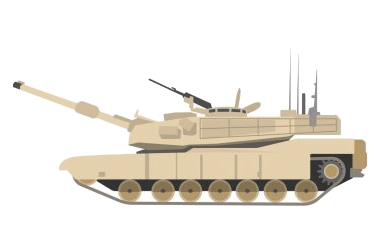

 Military, defense and equipment
Military, defense and equipment

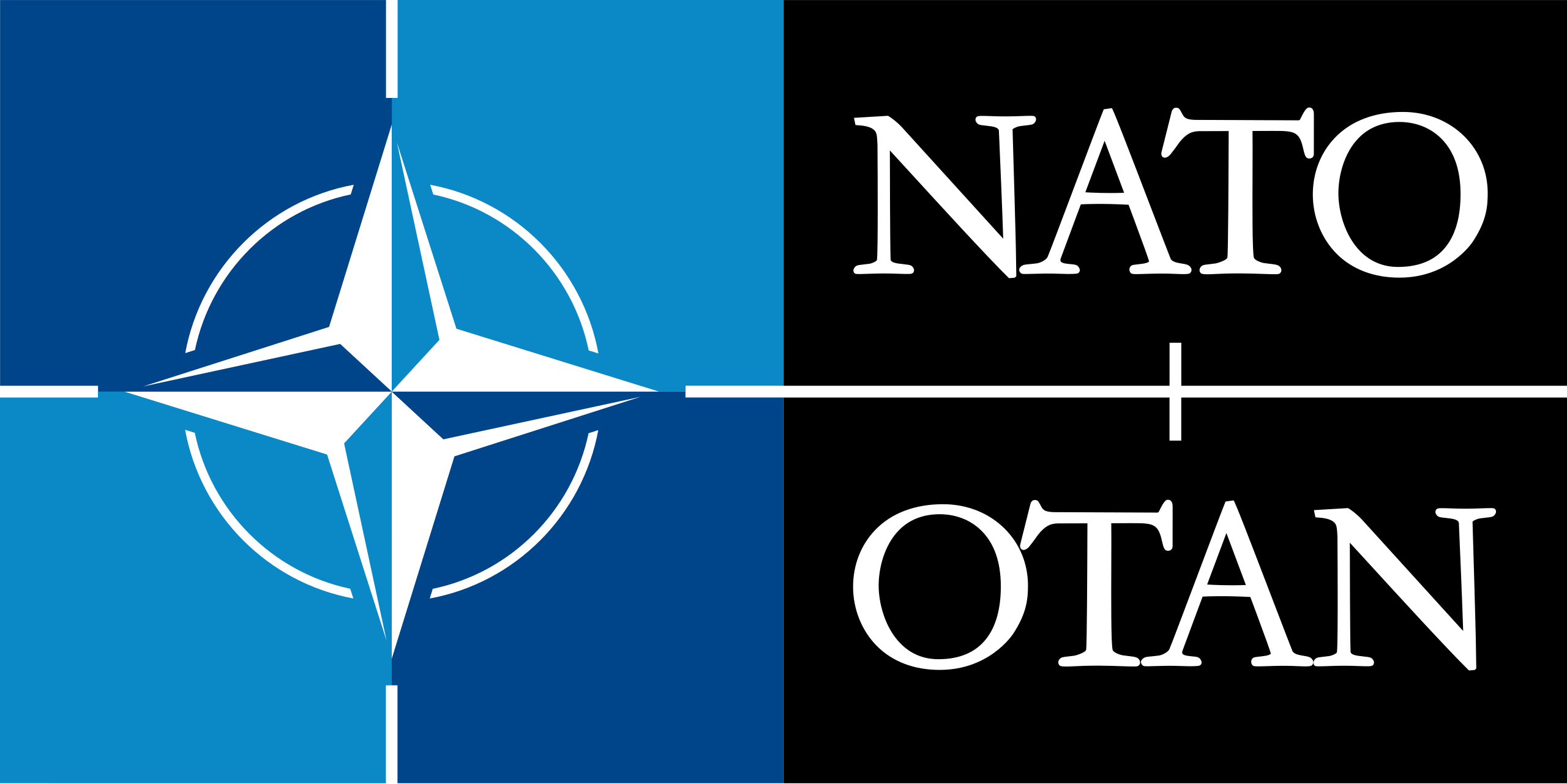 Mitglieder der NATO
Mitglieder der NATO
 Montenegro
Montenegro

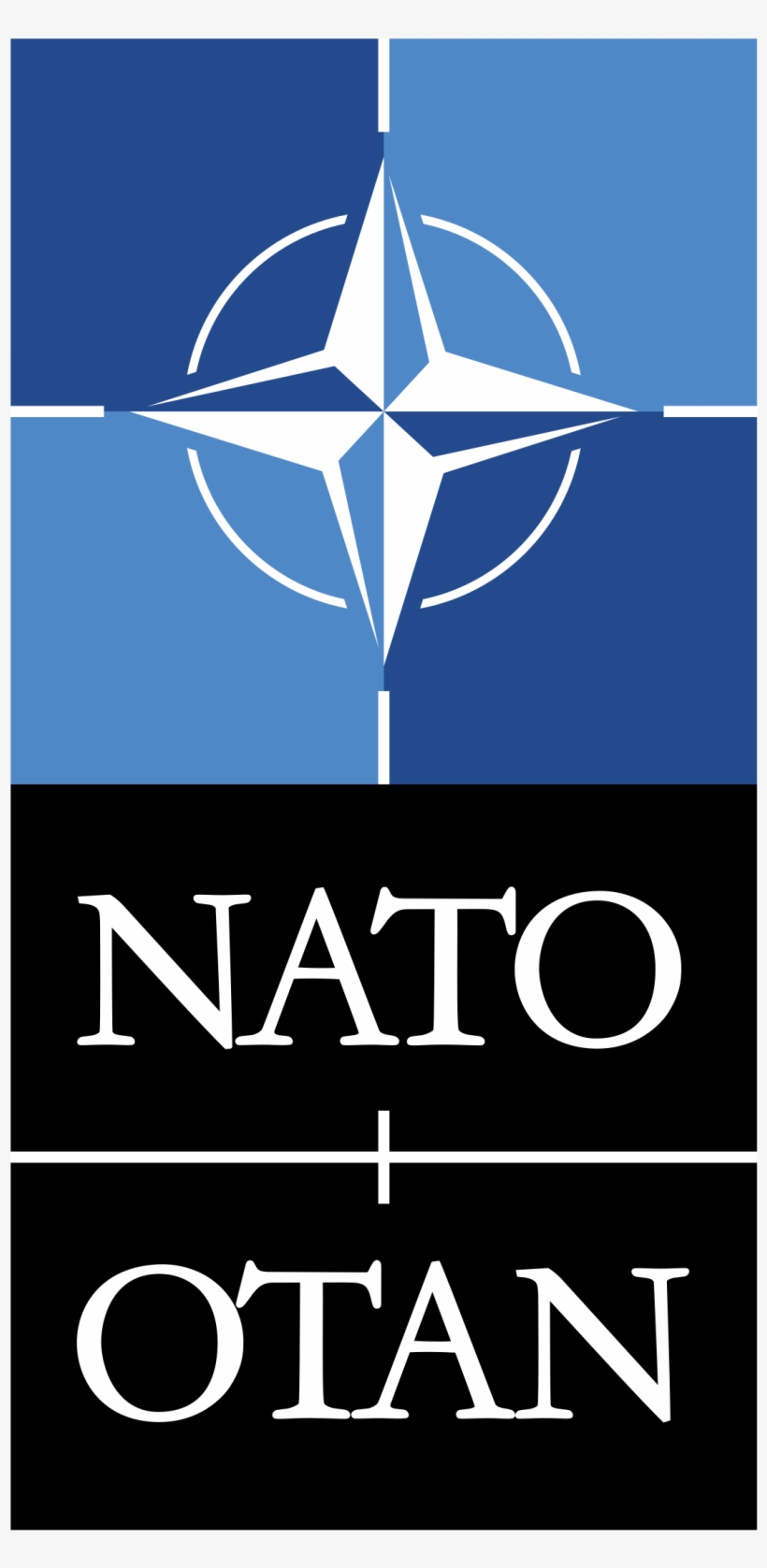 NATO summit
NATO summit
 Netherlands
Netherlands
 Nordmazedonien
Nordmazedonien
 Norwegen
Norwegen
 Poland
Poland
 Portugal
Portugal
 Romania
Romania
 Sweden
Sweden
 Slovakia
Slovakia
 Slovenia
Slovenia
 Spain
Spain
 Czech Republic
Czech Republic
 Turkey
Turkey
 Hungary
Hungary
 United States
United States
 United Kingdom
United Kingdom

 Important International Organizations
Important International Organizations
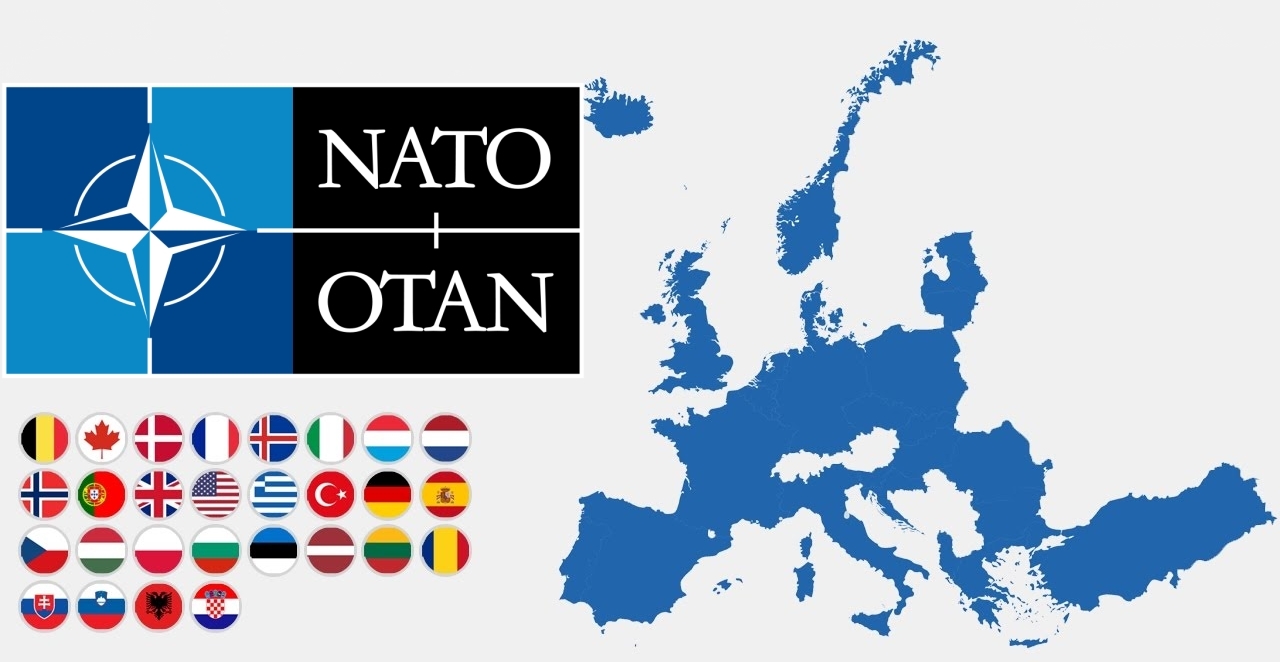
Die NATO (englisch North Atlantic Treaty Organization „Organisation des Nordatlantikvertrags“ bzw. Nordatlantikpakt-Organisation), im Deutschen häufig als Atlantisches Bündnis oder als Nordatlantikpakt bezeichnet (französisch OTAN – Organisation du Traité de l’Atlantique Nord), ist eine Internationale Organisation ohne Hoheitsrechte. Ihre Mitgliedstaaten behalten ihre volle Souveränität und Unabhängigkeit. Basis der NATO ist der Nordatlantikvertrag nach Artikel 51 der UN-Charta. Ihre Organisation versteht sich nicht nur als Verteidigungsbündnis, sondern auch als militärisch-politische Organisation von 29 europäischen und nordamerikanischen Mitgliedstaaten mit dem Ziel eigener Sicherheit und weltweiter Stabilität.
Das NATO-Hauptquartier beherbergt den Nordatlantikrat (das Hauptorgan der NATO) und seine unmittelbar nachgeordneten Einrichtungen, den International Staff (IS) und den International Military Staff (IMS); diese Institution hat seit 1967 ihren Sitz in Brüssel. Nach der Unterzeichnung des Nordatlantikpakts am 4. April 1949 – vorerst auf 20 Jahre – war das Hauptquartier zunächst in London ansässig und anschließend von 16. April 1952 bis 1967 in Paris angesiedelt worden.
Die beiden wichtigsten militärischen Hauptquartiere sind das ACO (aus historischen und juristischen Gründen auch als Supreme Headquarters Allied Powers Europe / SHAPE bezeichnet) im belgischen Casteau bei Mons und das Allied Command Transformation (ACT) in der US-Stadt Norfolk (Virginia).
北大西洋公约组织(英语:North Atlantic Treaty Organization,缩写为NATO;法语:Organisation du Traité de l'Atlantique Nord,缩写为OTAN),简称北约组织或北约,是欧洲及北美洲国家为实现防卫合作而建立的国际组织。1949年3月18日,美国、英国及法国公开建立北大西洋公约组织,于同年4月4日在美国华盛顿签署《北大西洋公约》后正式成立。为与以前苏联为首的东欧集团国成员相抗衡。及至苏联解体,华沙条约组织宣告解散,北约就成为一个地区性防卫协作组织。北约的最高决策机构是北约理事会。理事会由成员国国家元首及政府高层、外长、国防部长组成。总部设在比利时的布鲁塞尔。最新成员黑山于2017年6月5日加入,至此北约总共有跨域欧洲和北美的29个国家组成。北约军事开支占世界国防开支的70%[4],成员国国防开支占该国GDP的2%左右[5]。
公约第5条规定成员国受到的攻击一旦被确认,其他成员国将作出即时反应。该条款被理解为各国部队将自动参战,并不再次需要各国政府的参战授权。但这一条条款在九一一事件之前,一直都未有动用过[6] 。北约曾协助反海盗行动(counter-piracy operations),在联合国要求下打击亚丁湾、非洲之角和印度洋的海盗[7],并在2011年根据联合国安理会1973号决议将利比亚上空设为禁飞区。
北大西洋条約機構(きたたいせいようじょうやくきこう)は、北大西洋条約に基づき、アメリカ合衆国を中心とした北アメリカ(=アメリカとカナダ)およびヨーロッパ諸国によって結成された軍事同盟である。29カ国が加盟し、日本など非加盟国とも協力関係にある[1]。前身はブリュッセル条約 (1948年)。ベルギー首都ブリュッセルに本部を置く[2]。
略称は頭字語が用いられ、英語圏では、North Atlantic Treaty Organization を略した NATO(ネイトー)と呼ばれ、日本やドイツ語圏では NATO(ナトー)、フランス語圏・スペイン語圏・ポルトガル語圏等では OTAN(オタン)と呼ばれる。
The North Atlantic Treaty Organization (NATO /ˈneɪtoʊ/; French: Organisation du Traité de l'Atlantique Nord; OTAN), also called the North Atlantic Alliance, is an intergovernmental military alliance between 29 North American and European countries. The organization implements the North Atlantic Treaty that was signed on 4 April 1949.[3][4] NATO constitutes a system of collective defence whereby its independent member states agree to mutual defence in response to an attack by any external party. NATO’s Headquarters are located in Haren, Brussels, Belgium, while the headquarters of Allied Command Operations is near Mons, Belgium.
Since its founding, the admission of new member states has increased the alliance from the original 12 countries to 29. The most recent member state to be added to NATO is Montenegro on 5 June 2017. NATO currently recognizes Bosnia and Herzegovina, Georgia, Macedonia and Ukraine as aspiring members.[5] An additional 21 countries participate in NATO's Partnership for Peace program, with 15 other countries involved in institutionalized dialogue programs. The combined military spending of all NATO members constitutes over 70% of the global total.[6] Members have committed to reach or maintain defense spending of at least 2% of GDP by 2024.[7][8]
L’Organisation du traité de l'Atlantique norda (en anglais : North Atlantic Treaty Organization) est l'organisation politico-militaire mise en place par les pays signataires du traité de l'Atlantique nord afin de pouvoir remplir leurs obligations de sécurité et de défense collectives. Elle est le plus souvent désignée par son acronyme OTAN (en anglais NATO) mais aussi fréquemment nommée l’Alliance atlantique, plus rarement l’Alliance euro-atlantique ou l’Alliance transatlantique5, ou parfois, encore plus brièvement, simplement l’Alliance.
Le texte de ce traité, signé le 4 avril 1949, établit le Conseil de l'Atlantique nord (CAN), et lui donne mission de mettre en place l'organisation nécessaire à son application. Le choc provoqué par le déclenchement de la guerre de Corée conduit le CAN à décider fin 1950 la création d'une organisation militaire intégrée permanente, qui constitue encore actuellement la marque distinctive de l'OTAN et lui assure des capacités militaires qu'aucune autre alliance de défense ne possède. Sous le vocable OTAN, l'usage a prévalu d'englober l'alliance juridiquement conclue par les pays signataires du traité de l'Atlantique nord, et l'organisation civile et militaire mise en place pour en rendre opérants les objectifs. La France toutefois a fait exception en décidant en 1966, tout en restant membre de l'Alliance atlantique, de quitter l'organisation militaire intégrée, dont elle est redevenue membre à part entière en 2009.
L'Alliance voit le jour dans le contexte général des débuts de la guerre froide et plus spécifiquement pendant le blocus de Berlin exercé par les Soviétiques. Elle a pour vocation initiale d'assurer la sécurité de l'Europe occidentale en instaurant un couplage fort avec les États-Unis, seul moyen aux yeux des Européens après la Seconde Guerre mondiale de se prémunir contre toute tentative expansionniste de l'Union soviétique. Selon le mot de son premier secrétaire général, Lord Ismay, le rôle de l'OTAN consiste à « garder les Russes à l'extérieur, les Américains à l'intérieur et les Allemands sous tutelle »b. L'OTAN constitue le noyau dur du bloc de l'Ouest. Entre 1955 et 1991, l'adversaire désigné de l'OTAN est le pacte de Varsovie formé par les Soviétiques à la suite de l'adhésion de la RFA à l'Alliance atlantique et à son réarmement. L'OTAN s'organise donc pour faire face à cette menace par la définition de concepts stratégiques touchant notamment les questions relatives aux armes nucléaires, par la planification coordonnée entre tous ses membres de leurs moyens militaires, et par des commandements intégrés par zone géographique, dont le SHAPE est de loin le plus important.
Depuis la dissolution de l'URSS et la fin de la guerre froide en 1991, l'Alliance atlantique a perduré malgré la disparition de sa principale raison d'être initiale. Elle a procédé à son élargissement à d'anciens pays du bloc de l'Est et d'anciennes républiques de l'Union soviétique. Elle a pris en compte de nouvelles crises et menaces comme les conflits nationalistes dans l'ex-Yougoslavie, l'essor du terrorisme international ou la prolifération des armes de destruction massive, en conséquence de quoi l'OTAN a revu en profondeur son concept stratégique et son organisation civile et militaire à plusieurs reprises. Elle a développé une politique systématique de partenariats en Europe et dans le monde, au titre de laquelle les pays de l'Alliance ont établi depuis 1994 un partenariat pour la paix (PPP) avec la Russie, les pays de sa zone d'influence et avec les pays neutres d'Europe occidentale. L'OTAN a aussi mis en place en 2002 avec l'UE une relation privilégiée, l'Identité européenne de sécurité et de défense (IESD), qui permet à cette dernière de bénéficier de moyens de l'OTAN pour certaines opérations entrant dans le cadre de sa politique de sécurité et de défense commune.
Le siège de l'OTAN, initialement situé à Londres puis à Paris (dans les locaux désormais occupés par l'université Paris-Dauphine - PSL) se trouve depuis 1966 à Haren (Bruxelles), et son principal commandement militaire, le SHAPE, initialement installé à Rocquencourt (France), se trouve aujourd'hui à Maisières (Mons), également en Belgique.
L'Organizzazione del Trattato dell'Atlantico del Nord (in inglese North Atlantic Treaty Organization, in sigla NATO,[3] in francese: Organisation du Traité de l'Atlantique Nord, in sigla OTAN) è un'organizzazione internazionale per la collaborazione nel settore della difesa.
Il trattato istitutivo della NATO, il Patto Atlantico, fu firmato a Washington il 4 aprile 1949, ovvero nell'immediato secondo dopoguerra, ed entrò in vigore il 24 agosto dello stesso anno. Attualmente, fanno parte della NATO 29 stati del mondo.
La Organización del Tratado del Atlántico Norte u OTAN (en inglés: North Atlantic Treaty Organization o NATO; en francés: Organisation du Traité de l'Atlantique Nord u OTAN), también denominada Alianza del Atlántico, Alianza del Atlántico Norte o Alianza Atlántica, es una alianza militar intergubernamental basada en el Tratado del Atlántico Norte o Tratado de Washington firmado el 4 de abril de 1949. La organización constituye un sistema de defensa colectiva, en la cual los Estados miembros acuerdan defender a cualquiera de sus miembros si son atacados por una potencia externa.3
La sede de la OTAN se encuentra en Bruselas, Bélgica, uno de los veintinueve Estados miembros de la organización que se extiende por Norteamérica y Europa. La última incorporación fue Montenegro, en junio de 2017. Además, veintiún países colaboran con la OTAN dentro del programa Asociación para la Paz, con otros quince involucrados en programas de diálogo y nueve como socios globales. En 2017, el gasto militar combinado de los veintinueve países fue el 52 % del gasto militar mundial.45
En sus primeros años, la OTAN no era mucho más que una asociación política. Sin embargo, la guerra de Corea hizo que se planteara una coalición permanente. Entonces se creó una estructura militar bajo la dirección de los comandantes de Estados Unidos. La Guerra Fría llevó a las naciones rivales a crear el Pacto de Varsovia en 1955.
Siempre se han manifestado dudas sobre la alianza europeo-norteamericana ante una invasión soviética, desacuerdos que se plasmaron con la creación por parte de Francia de la fuerza de choque nuclear y con su retirada de la estructura militar de la alianza entre 1966 y 2009.
Después de la caída del Muro de Berlín en 1989, la organización intervino dentro de la guerra de Yugoslavia, lo que se convirtió en la primera intervención conjunta de la OTAN. En lo político la organización ha mejorado sus relaciones con los antiguos miembros del bloque del Este, dando como resultado la incorporación a la OTAN de varios miembros del Pacto de Varsovia.
La única ocasión en que un país miembro invocó el artículo 5 del tratado reivindicando la ayuda en su defensa, fue Estados Unidos en 2001.6 Desde entonces, los miembros colaboraron con los Estados Unidos en la guerra de Afganistán. El artículo 4 del tratado prevé llamar a consulta a los miembros y ha sido convocado cuatro veces, tres de ellas por Turquía, la primera por la guerra de Irak y las dos restantes por ataques recibidos durante la guerra civil siria,7 la cuarta ha sido invocada por Polonia durante la crisis de Crimea de 2014, debido a la movilización de tropas rusas en la frontera polaca con Kaliningrado y las maniobras rusas en el mar Báltico.
НА́ТО, Организа́ция Североатланти́ческого догово́ра, Североатлантический Альянс (англ. North Atlantic Treaty Organization, NATO; фр. Organisation du traité de l'Atlantique Nord, OTAN) — военно-политический блок, объединяющий большинство стран Европы, США и Канаду. Основан 4 апреля 1949 года в США, с целью защиты Европы от советского влияния[~ 1][~ 2][~ 3][~ 4][~ 5]. Тогда государствами — членами НАТО стали 12 стран: США, Канада, Исландия, Великобритания, Франция, Бельгия, Нидерланды, Люксембург, Норвегия, Дания, Италия и Португалия. Это «трансатлантический форум» для проведения странами-союзниками консультаций по любым вопросам, затрагивающим жизненно важные интересы его членов, включая события, способные поставить под угрозу их безопасность. Одной из декларированных целей НАТО является обеспечение сдерживания любой формы агрессии в отношении территории любого государства — члена НАТО или защиты от неё.
В настоящее время членами НАТО являются 29 стран. Военные расходы всех членов НАТО в совокупности составляют более 70 процентов от общемирового объёма[1].

普丹战争和普奥战争之后,普鲁士迅速崛起。奥地利帝国被迫退出德意志邦联。德国北部的众多邦国被迫与普鲁士结盟。只有南方的巴登、符滕堡靠拢法国。俾斯麦纵横捭阖,挑拨法国的拿破仑三世向德国宣战,普法战争之后,德意志第二帝国在凡尔赛宫镜廊宣布成立。 北德意志联邦的黑白红三色旗,颜色来源于普鲁士的黑白双色国旗和和汉萨同盟的红白双色旗;也有一说,其红色来自勃兰登堡公国的旗帜。




Die Allianz zwischen der Sowjetunion, der KP Chinas und der Guomindang beschließt die 北伐战争 Nordexpedition mit dem Ziel, China unter der Flagge der Guomindang zu vereinen und die Herrschaft der örtlichen Kriegsfürsten zu beenden
 Beijing Shi-BJ
Beijing Shi-BJ
 China
China
 Chinese Super League 2019
Chinese Super League 2019

 Financial
Financial
 ***Global Financial Center
***Global Financial Center

 History
History
 M 1500 - 2000 AD
M 1500 - 2000 AD

 History
History
 L 1000 - 1500 AD
L 1000 - 1500 AD

 History
History
 N 2000 - 2100 AD
N 2000 - 2100 AD

 International cities
International cities
 ***Global Urban Economic Competitiveness
***Global Urban Economic Competitiveness
 ITU World Championship Series
ITU World Championship Series
 Beijing-Hangzhou Grand Canal
Beijing-Hangzhou Grand Canal
 League of Legends
League of Legends
 League of Legends World Championship
League of Legends World Championship
 Olympic Summer Games
Olympic Summer Games
 2022 Winter Olympics
2022 Winter Olympics
 Silk road
Silk road
 Shanghai Cooperation Organization
Shanghai Cooperation Organization

 Sport
Sport
 Triathlon
Triathlon

 Vacation and Travel
Vacation and Travel

 World Heritage
World Heritage
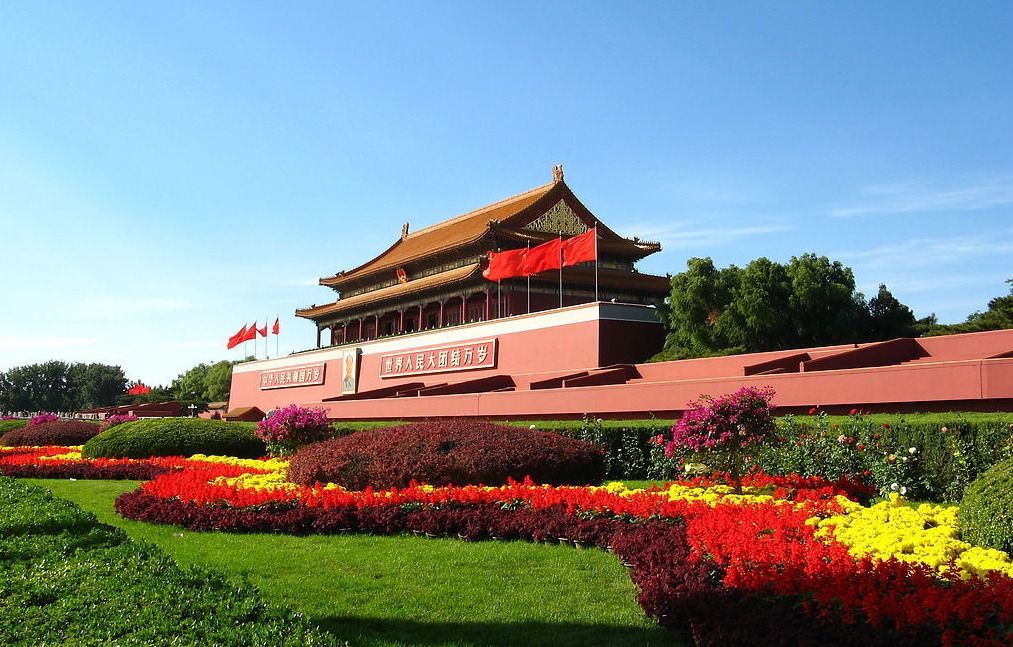
Peking (chinesisch 北京, Pinyin Běijīng, W.-G. Pei-ching auch Beijing, ![]() [pei˨˩tɕiŋ˥˥], deutsch historisch Pekingen[2]) ist die Hauptstadt der Volksrepublik China. Der Name bedeutet Nördliche Hauptstadt (vgl. Nanjing für Südliche Hauptstadt). Peking hat eine über dreitausendjährige Geschichte und ist heute eine regierungsunmittelbare Stadt, das heißt, sie ist direkt der Zentralregierung unterstellt und damit Provinzen, autonomen Gebieten und Sonderverwaltungszonen gleichgestellt.
[pei˨˩tɕiŋ˥˥], deutsch historisch Pekingen[2]) ist die Hauptstadt der Volksrepublik China. Der Name bedeutet Nördliche Hauptstadt (vgl. Nanjing für Südliche Hauptstadt). Peking hat eine über dreitausendjährige Geschichte und ist heute eine regierungsunmittelbare Stadt, das heißt, sie ist direkt der Zentralregierung unterstellt und damit Provinzen, autonomen Gebieten und Sonderverwaltungszonen gleichgestellt.
Das gesamte 16.807 Quadratkilometer große (etwas größer als Schleswig-Holstein) Verwaltungsgebiet Pekings hat 21,5 Millionen Einwohner (Stand: März 2016).[3] Es stellt kein zusammenhängendes Stadtgebiet dar, mit seiner dominierenden ländlichen Siedlungsstruktur ist es eher mit einer Provinz vergleichbar.[4] Von der Gesamtbevölkerung sind 11,8 Millionen registrierte Bewohner mit ständigem Wohnsitz (戶口 / 户口, hùkǒu) und 7,7 Millionen temporäre Einwohner (流動人口 / 流动人口, liúdòng rénkǒu) mit befristeter Aufenthaltsgenehmigung (暫住證 / 暂住证, zànzhùzhèng).[5] Wird die Kernstadt (hohe Bebauungsdichte und geschlossene Ortsform) als Grundlage genommen, leben in Peking 7,7 Millionen Menschen mit Hauptwohnsitz (2007).[6] Der Ballungsraum (einschließlich Vororte) hat 11,8 Millionen Einwohner (2007).[7] Ab 2017 soll die Metropole Kern einer Megalopolis von 130 Millionen Einwohnern namens Jing-Jin-Ji werden.
Peking stellt als Hauptstadt das politische Zentrum Chinas dar. Aufgrund der langen Geschichte beherbergt Peking ein bedeutendes Kulturerbe. Dies umfasst die traditionellen Wohnviertel mit Hutongs, den Tian’anmen-Platz (chinesisch Platz am Tor des Himmlischen Friedens), die 1987 von der UNESCO zum Weltkulturerbe erklärte Verbotene Stadt, den neuen und alten Sommerpalast und verschiedene Tempel, wie z. B. den Himmelstempel, den Lamatempel und den Konfuziustempel.(2012)
Beijing ist auch eine der berühmtesten kulturhistorischen Städte mit einer ereignisreichen Geschichte in der Welt und zählt zu den sieben alten Hauptstädten Chinas. Vor 700 000 Jahren lebten hier schon die sogenannten „Peking-Menschen". Die Stadt Beijing wurde 938 der provisorische Sitz der Liao-Dyna-stie (907-1125) und diente 800 Jahre lang als die Hauptstadt der Jin- (1115-1234), der Yuan-(1279-1368). der Ming-(1368-1644) und der Qing-Dynastie (1644-1911). Zahlreiche weltbekannte Sehenswürdigkeiten und historische Stätten sind auf den heutigen Tage erhalten geblieben, darunter der Kaiserpalast als größter Palastkomplex der Welt, die Große Mauer als eines der acht Weltwunder, der Himmelstempel als weltweit größter Opferaltar für den Himmel, die Ming-Gräber als konzentrierte kaiserliche Grabanlagen in der Welt und der Sommerpalast als weltweit größte kaiserliche Parkanlage.
Die Vororte Beijings sind von Bergen umgeben und haben schöne Landschaft. Dort sind alte Tempel, Teiche, Wasserfälle und dörfliches Idyll zu sehen. Darüber hinaus wird das Stadtbild von einer hohen Anzahl von modernen Gebäuden geprägt. Auch große Vergnügungsparks, Zoos, botanische Gärten, städtische öffentliche Plätze und Parks in der Stadt üben eine große Anziehungskraft auf Touristen aus.
北京市(ペキンし、中国語: 北京市、拼音: )は、中華人民共和国の首都である。
行政区画上は直轄市であり、中国の華北の中央に位置する。人口は2152万(2014年)であり、中国では上海に次ぐ第二の都市。世界有数のメガシティであり、極めて高い影響力を有する世界都市でもある。古くは大都・燕京・北平とも呼ばれた。
春秋戦国時代には燕の首都で薊(けい)と称された。周の国都洛陽からは遠く離れ、常に北方の匈奴などの遊牧民族の侵入による被害を受ける辺境であった。秦漢代には北平(ほくへい)と称されるが、満州開発が進み、高句麗など周辺国の勢力が強大となると、戦略上、また交易上の重要な拠点として重視されるようになった。北京市に隣接する河北省涿郡(たくぐん)は三国志の英雄劉備の故郷で知られるとともに隋の煬帝が築いた大運河の北の起点とされている。
唐末五代の騒乱期、内モンゴルから南下してきた遼朝は、後晋に対し軍事支援を行った代償として北京地方を含む燕雲十六州を割譲された。遼はこの都市を副都の一つ南京と定めた。その後金朝が遼を滅ぼし支配権を獲得すると、金は北京に都城を定め中都とした。更にモンゴル帝国(元朝)が金を滅ぼすと大都として元朝の都城となり、カラコルムに代わってモンゴル帝国の中心となった。
朱元璋が元を北方に駆逐し明朝が成立すると、名称は北平に戻され、都城は南京に定められた。しかし、燕王に封じられ北京を拠点とした朱棣(後の永楽帝)は、1402年に建文帝に対し軍事攻撃を行い政権を奪取。皇帝に即位した後北京遷都を実行し地名を北京に改めた。辛亥革命後は中華民国北洋政府は北京を首都と定めたが、南京を首都と定めた蒋介石を中心とする国民政府は、「政府直轄地域」を意味する直隷省を1928年6月15日に河北省へ、北の首都を意味する北京を北平(ほくへい、ベイピンBěipíng)へと、それぞれ改称した。1937年から1945年まで続いた日本軍占領期は北京の名称が用いられ(公式には1940年に改名)、日本の敗戦によって再び北平に改称された。
1949年10月1日の中華人民共和国成立により新中国の首都とされた北京(北平)は再び北京と改称され現在に至っている。しかし、中華人民共和国の存在を承認せず、南京を公式な首都として大陸地区への統治権を主張する中華民国(台湾)では、現在でも公式名称として「北平」の名称が用いられている。
Beijing (/beɪˈdʒɪŋ/;[10] Mandarin: [pèi.tɕíŋ] (![]() listen)), formerly romanized as Peking,[11] is the capital of the People's Republic of China, the world's third most populous city proper, and most populous capital city. The city, located in northern China, is governed as a municipality under the direct administration of central government with 16 urban, suburban, and rural districts.[12] Beijing Municipality is surrounded by Hebei Province with the exception of neighboring Tianjin Municipality to the southeast; together the three divisions form the Jingjinji metropolitan region and the national capital region of China.[13]
listen)), formerly romanized as Peking,[11] is the capital of the People's Republic of China, the world's third most populous city proper, and most populous capital city. The city, located in northern China, is governed as a municipality under the direct administration of central government with 16 urban, suburban, and rural districts.[12] Beijing Municipality is surrounded by Hebei Province with the exception of neighboring Tianjin Municipality to the southeast; together the three divisions form the Jingjinji metropolitan region and the national capital region of China.[13]
Beijing is an important capital and global power city, and one of the world's leading centers for politics, economy and business, finance, education, culture, innovation and technology, architecture, language, and diplomacy. A megacity, Beijing is the second largest Chinese city by urban population after Shanghai and is the nation's political, cultural, and educational center.[14] It is home to the headquarters of most of China's largest state-owned companies and houses the largest number of Fortune Global 500 companies in the world.[15] It is also a major hub for the national highway, expressway, railway, and high-speed rail networks. The Beijing Capital International Airport has been the second busiest in the world by passenger traffic since 2010,[16] and, as of 2016, the city's subway network is the busiest and second longest in the world.
Combining both modern and traditional architecture, Beijing is one of the oldest cities in the world, with a rich history dating back three millennia. As the last of the Four Great Ancient Capitals of China, Beijing has been the political center of the country for most of the past eight centuries,[17] and was the largest city in the world by population for much of the second millennium A.D.[18] Encyclopædia Britannica notes that "few cities in the world have served for so long as the political headquarters and cultural center of an area as immense as China."[19] With mountains surrounding the inland city on three sides, in addition to the old inner and outer city walls, Beijing was strategically poised and developed to be the residence of the emperor and thus was the perfect location for the imperial capital. The city is renowned for its opulent palaces, temples, parks, gardens, tombs, walls and gates.[20] It has seven UNESCO World Heritage Sites – the Forbidden City, Temple of Heaven, Summer Palace, Ming Tombs, Zhoukoudian, and parts of the Great Wall and the Grand Canal – all popular locations for tourism.[21] Siheyuans, the city's traditional housing style, and hutongs, the narrow alleys between siheyuans, are major tourist attractions and are common in urban Beijing.
Pékin2 (en chinois : 北京 ; pinyin : běijīng ; API : [pe˨˩˦i.tɕi˥ŋ] Écouter la prononciation en mandarin, littéralement « capitale du nord »), également appelée Beijing, est la capitale de la République populaire de Chine. Située dans le nord du pays, la municipalité de Pékin (北京市, abrégé en 北京), d'une superficie de 16 800 km2, borde la province du Hebei ainsi que la municipalité de Tianjin. Pékin est considérée comme le centre politique et culturel de la Chine, tandis que Hong Kong et Shanghai dominent au niveau économique.
D'abord ville périphérique de l'empire chinois sous les Han et les Tang, elle prend de l'importance lorsque les Jurchen, qui fondent la dynastie Jin, la choisissent comme leur capitale principale en 1153. Le prince mongol Kubilai Khan en fait de même sous le nom de Dadu (« grande métropole »), enfin les Ming y transfèrent leur administration en 1421, parachevant le choix de Pékin comme capitale de la Chine. Située à proximité de la Grande Muraille, Pékin abrite des monuments célèbres comme la Cité interdite et le Temple du ciel, qui sont inscrits au patrimoine mondial. De nombreuses réalisations architecturales et structurelles ont modifié la ville à l'occasion des Jeux olympiques d'été dont elle a été l'hôte en 2008. Beijing a été choisie par le CIO pour organiser les Jeux olympiques d'hiver de 2022 et sera la première ville à avoir accueilli les deux éditions de l'évènement sportif international.
Avec 21,15 millions d'habitants en 2013, Pékin est la deuxième ville la plus peuplée de Chine après Shanghai. La zone urbaine compte quant à elle 18 millions d'habitants. Le parler pékinois forme la base du mandarin standard. D'un point de vue économique, Pékin est la troisième ville de Chine par le PIB total derrière Shanghai et Hong Kong. Elle connaît une croissance économique très rapide, nettement plus de 10 % par an dans les années 2000. Un nouveau Central business district (CBD) est en construction.
Pechino (AFI: /peˈkino/[1]; in cinese 北京S, BěijīngP, letteralmente "capitale del nord", ) è la capitale della Cina e della municipalità omonima.
L'intera municipalità ha dimensioni pari a poco più della metà del Belgio avendone però quasi il doppio degli abitanti (21.516.000[senza fonte]). Pechino è la seconda città più popolata della Cina dopo Shanghai, la capitale di Stato più popolata al mondo, e la seconda città del mondo per popolazione. Confina esclusivamente con la provincia dell'Hebei e a sud-est con la municipalità di Tientsin.
Pekín, Pequín o Beijing (chino simplificado y tradicional: 北京, pinyin: Běijīng, Wade-Giles: Pei-ching, pronunciado: (![]() escuchar), literalmente «capital del Norte») es uno de los cuatro municipios que, junto con las veintidós provincias, cinco regiones autónomas y dos regiones administrativas especiales, conforman la República Popular China. Además Pekín es la capital del país y una de las ciudades más pobladas del mundo con 21 150 000 personas en 2013.2
escuchar), literalmente «capital del Norte») es uno de los cuatro municipios que, junto con las veintidós provincias, cinco regiones autónomas y dos regiones administrativas especiales, conforman la República Popular China. Además Pekín es la capital del país y una de las ciudades más pobladas del mundo con 21 150 000 personas en 2013.2
Situada en la periferia de la antigua civilización china, Pekín se convirtió en el baluarte de las potencias extranjeras que ocuparon China del Norte entre los siglos X y XII. La dinastía Liao estableció aquí su capital meridional, la más acreditada de las cinco del reino. La dinastía Jin, la siguiente dinastía "bárbara" emprendió un amplio proyecto urbanístico a imagen de la capital de los Song septentrionales, Kaifeng. En 1215 los mongoles arrasaron la ciudad, pero 50 años después Kublai Kan decidió edificar en ella la nueva capital.
En la zona centro-sur del trazado hipodámico se hallaba la colosal villa imperial que contenía el complejo de palacios imperiales. El emperador Yongle, el tercer Ming, decidió trasladar la capitalidad a Pekín. Las murallas del lado septentrional fueron trasladadas más hacia el Sur para que el complejo palaciego imperial, la llamada Ciudad Prohibida, quedase exactamente en el centro del plano. Así la estructura del nuevo Pekín representa la cima del urbanismo tradicional chino, basado en la organización introducida por los mongoles así como en la estructura de los palacios imperiales de Kaifeng y Nankín además de tomar en consideración las normas de la geomancia china (風水).
Pekín es uno de los cuatro municipios de China que poseen un estatus provincial y están bajo el control directo del gobierno central. Pekín ha sido municipalidad desde la creación de la República Popular China. Es una de las ciudades más pobladas de China, tan sólo superada por Shanghái en cuanto a población. Es considerada el corazón cultural, político y social de China.
Пеки́н (кит. 北京, пиньинь: Běijīng, палл.: Бэйцзин, буквально: «Северная столица») — столица и один из городов центрального подчинения Китайской Народной Республики. Пекин с трёх сторон окружён провинцией Хэбэй и граничит с Тяньцзинем на юго-востоке.
Это крупнейший железно- и автодорожный узел и один из основных авиаузлов страны. Кроме того, Пекин является политическим, образовательным и культурным центром КНР, в то время как главными экономическими центрами считаются Шанхай и Гонконг. Вместе с тем, в последнее время всё больше берёт на себя роль локомотива предпринимательской деятельности и основного поля для создания инновационных предприятий.
Входит в число четырёх древних столиц Китая. В 2008 году в городе прошли Летние Олимпийские игры. В 2022 году в городе пройдут Зимние Олимпийские игры.
 Art
Art
 Review
Review
 Architecture
Architecture
 Religion
Religion
 Literature
Literature